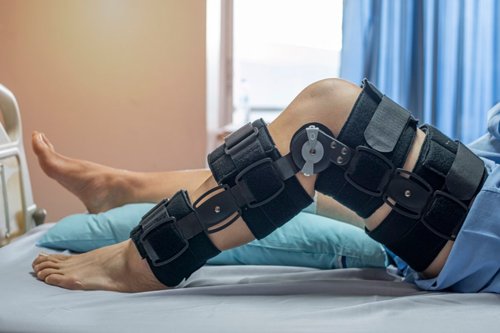Meet Our Doctor
Dr. Vrushabh Kumbhare
Orthopedic and Joint Replacement Surgeon
Educational details:
- M.B.B.S. (4.5 years +1 year Internship): August 2009 - April 2015 N K P Salve institute of medical sciences and research centre, Digdoh hills, Nagpur, Maharashtra (Under Maharashtra University of Health Sciences, Nashik)
- M.S. Orthopedics(3 years): May 2017- August 2020 Jawaharlal Nehru Medical Collage, Sawangi (Meghe) (Under Datta Meghe Institute of Medical Sciences Deemed to be University)
Experience:
- Senior resident: (September 2019 – May 2021) Department of Orthopaedics, Jawaharlal Nehru Medical Collage, Sawangi (Meghe)


Dr. Vrushabh Kumbhare
Orthopedic and Joint Replacement Surgeon
Knee Fracture In Nagpur
A knee fracture refers to a break or crack in one or more of the bones that make up the knee joint. The knee joint is comprised of the femur (thigh bone), tibia (shin bone), and patella (knee cap). Fractures can occur in any of these bones due to traumatic injuries, falls, or other impactful events. Feel free to visit our clinic and schedule an appointment.
If you suspect a knee fracture in Nagpur or any other location, it is crucial to seek immediate medical attention. Visit the nearest hospital, emergency room, or orthopedic clinic for a thorough evaluation and appropriate treatment. Medical professionals will conduct a physical examination and order imaging studies, such as X-rays, to diagnose the type and severity of the knee fracture.

Types of knee fractures
Patellar Fracture: Thus, A break in the patella, or knee cap. Once, This can be caused by a direct blow to the knee, such as a fall onto a hard surface.
Femoral Condyle Fracture: Firstly, Fractures that involve the rounded ends of the femur, which articulate with the tibia. Thus, These can occur due to high-impact injuries or accidents.
Tibial Plateau Fracture: Once, Fractures of the top surface of the tibia that forms part of the knee joint. Thus, These fractures are often caused by high-energy trauma. once, such as a car accident or a fall from a height.
Tibial Shaft Fracture: Fractures of the tibia that occur away from the knee joint, typically due to direct trauma or excessive force.
Symptoms of a knee fracture
Pain: Intense pain is a primary symptom of a knee fracture. The pain may be sharp, throbbing, or constant, and it typically worsens with movement or pressure on the affected knee.
Swelling: Swelling around the knee joint is a common response to injury. The swelling may develop rapidly and contribute to stiffness and discomfort.
Bruising: The injured area may develop bruising (discoloration) due to bleeding beneath the skin. The bruising may appear soon after the injury or may take some time to become noticeable.
Deformity: In some cases, a knee fracture may cause a visible deformity or misalignment of the knee joint. This can be evident by an abnormal shape or alignment compared to the uninjured knee.
Limited Range of Motion: A knee fracture can restrict the normal range of motion in the joint. Movements such as bending or straightening the knee may be significantly impaired.
Tenderness: The affected area may be tender to the touch. Pain and tenderness can be localized to a specific point or spread across the entire knee.
Difficulty Walking or Weight-Bearing: Due to pain, swelling, and reduced range of motion, individuals with a knee fracture may find it challenging to bear weight on the affected leg and may experience difficulty walking.
Instability: A knee fracture can lead to instability in the joint, making it feel wobbly or giving way during movement.
Treatment of a Knee Fracture
Medical Evaluation
- When a knee fracture is suspected, the individual should seek immediate medical attention.
- The healthcare provider will conduct a physical examination and order imaging studies, such as X-rays, to diagnose the type and severity of the fracture.
Immobilization
- Immobilization is often the initial step in treating a knee fracture. This may involve the use of a splint, brace, or cast to stabilize the knee and prevent further movement.
- Immobilization helps in reducing pain, preventing displacement of bone fragments, and creating a conducive environment for healing.
Pain Management
- Pain management is an integral part of the treatment. Over-the-counter or prescription pain medications may be recommended to alleviate pain and discomfort.
Closed Reduction
- In some cases, if the fracture fragments are displaced, a closed reduction may be performed. This involves manipulating the bones back into their proper alignment without surgery.
Surgery
- Surgical intervention may be necessary for certain types of knee fractures, especially those with significant displacement, joint involvement, or multiple fractures.
- Common surgical procedures include open reduction and internal fixation (ORIF), where the surgeon realigns the bones and uses screws, plates, or other devices to stabilize the fracture.
